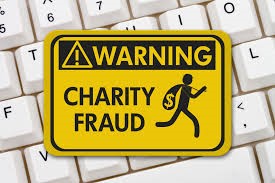When natural disasters or humanitarian crises strike, there is often a surge in public generosity, with individuals and organizations eager to support victims. However, scammers exploit this goodwill to solicit fraudulent donations, taking advantage of the urgency and emotional response of the public. Charity scams during crisis events can drain resources that should be going to victims, undermine trust in charitable giving, and leave donors feeling betrayed.
The Nature of Charity Scams During Crises
Scammers quickly adapt to global events, creating fake charities or impersonating legitimate ones shortly after a crisis occurs. Whether it’s a natural disaster like a hurricane, earthquake, or flood, or a humanitarian crisis such as a war or refugee emergency, these scams aim to exploit the compassionate response that typically follows. The scams often operate through various channels, including email solicitations, social media campaigns, crowdfunding sites, and phone calls.
During events such as Hurricane Katrina in 2005, the 2010 earthquake in Haiti, or more recently, the COVID-19 pandemic, scammers swiftly created fraudulent fundraising campaigns, directing money to personal accounts rather than disaster relief efforts. The American Red Cross, for example, reported an increase in phishing scams and fraudulent websites after such disasters.
Recent Examples of Crisis-Driven Charity Scams
1. COVID-19 Pandemic Scams (2020-2021): The COVID-19 pandemic saw an unprecedented surge in charity scams. Fraudsters impersonated organizations like the World Health Organization (WHO), Centers for Disease Control and Prevention (CDC), and local health agencies. Scammers claimed to raise funds for PPE, vaccine research, or financial aid for those impacted by the virus, but funneled donations into their own pockets. According to the Federal Trade Commission (FTC), Americans lost over $145 million to COVID-related scams in 2020 alone, with many of those schemes revolving around fraudulent charitable donations.
2. Ukraine Humanitarian Crisis Scams (2022-2023): Following the Russian invasion of Ukraine in early 2022, scammers took advantage of the global outpouring of support for refugees and civilians affected by the war. Fraudsters set up fake charities and crowdfunding campaigns, claiming to raise money for Ukrainian relief efforts. In one high-profile case, the FBI issued a public warning about an uptick in scams related to Ukraine. Fake websites and fraudulent emails mimicked legitimate organizations like UNICEF, the International Rescue Committee, and the Red Cross, asking for donations that never reached victims. As of 2023, millions of dollars have been stolen globally in these scams.
3. Turkey-Syria Earthquake Scams (2023): In February 2023, a devastating earthquake struck Turkey and Syria, leading to widespread destruction and loss of life. Within days, scammers had set up fake donation websites and crowdfunding pages, claiming to collect funds for earthquake relief. These fraudulent campaigns were prevalent on social media, where emotional images and videos were used to manipulate people into donating. Several fake GoFundMe campaigns were exposed, prompting authorities to urge the public to donate only through verified charities. The U.S. Federal Trade Commission and Better Business Bureau (BBB) warned that many of these scams looked highly convincing but did not benefit any legitimate relief efforts.
4. Maui Wildfire Scams (2023): Following the catastrophic wildfires in Maui, Hawaii, in August 2023, scammers wasted no time setting up fake relief funds. Posing as local charities or government agencies, these fraudsters sought to exploit the public’s desire to help displaced residents and rebuild devastated areas. Hawaii’s Attorney General issued a public alert about fake charity solicitations in the aftermath of the fires, which destroyed thousands of homes. Scammers set up fraudulent crowdfunding campaigns on platforms like GoFundMe and solicited donations through social media ads, emails, and even text messages, asking people to donate quickly to meet ‘urgent’ needs.
How Scammers Operate
The methods scammers use to defraud donors include impersonating well-known charities or setting up fake organizations with names similar to reputable ones. They may also create fake websites that appear professional, mimicking the logos and branding of established charitable organizations. These websites often use emotional imagery or fabricated stories to tug at potential donors’ heartstrings. Some scammers will even go as far as creating social media profiles and running ads on platforms like Facebook and Instagram, where they can reach thousands of users in a short amount of time.
Another common approach is through crowdfunding platforms such as GoFundMe or JustGiving, where individuals or groups can easily set up pages asking for donations. Scammers create false narratives, claiming to be collecting money for victims, when in reality, they keep the funds for themselves. These platforms typically have fewer safeguards than traditional charity organizations, which makes it easier for fraudsters to bypass any verification processes.
Phone scams are also prevalent, with fraudsters pretending to be representatives from well-known charities or relief organizations. These calls can seem legitimate because scammers often use spoofing techniques to make the caller ID appear as if it’s coming from a reputable source.
Signs of a Legitimate Charity
Knowing the signs of a legitimate charity is essential to avoiding these scams, especially during times of crisis when the public feels a strong urge to help. Here are some key indicators that can help distinguish real charities from fraudulent ones:
1. Verification of Credentials: Legitimate charities are registered with governmental authorities, such as the IRS in the United States. Donors should check whether the charity is a registered 501(c)(3) nonprofit organization, as these are required to file tax returns and are subject to public scrutiny. In the U.S., websites like GuideStar or the IRS’s “Tax Exempt Organization Search” tool can help verify whether a charity is registered and in good standing.
2. Transparency: Reputable charities are open about their operations, financials, and how they use donations. Most legitimate organizations provide detailed reports about their finances on their websites, including the percentage of donations used for administrative costs versus direct aid to victims.
3. Contact Information: Real charities have legitimate contact information, including physical addresses and phone numbers. Be wary of organizations that only provide vague or incomplete information, or that avoid direct contact with potential donors.
4. Unsolicited Requests: If a charity reaches out unsolicited, either through email or phone calls, it’s worth doing a bit of research before donating. Scammers often use high-pressure tactics to urge donors to give immediately, claiming the need is urgent and there’s no time to verify. Legitimate charities encourage thoughtful giving and will not pressure you into a decision.
5. Use of Social Media: While many legitimate charities use social media, scammers often take advantage of these platforms as well. Always verify a charity’s social media accounts by checking their official website for links and avoid donating directly through platforms that do not provide sufficient information about where the funds are going.
6. Secure Websites: Legitimate charities use secure websites for online donations. Always check that the website’s URL begins with “https” and that there is a padlock symbol next to the URL. This ensures that your financial information will be encrypted. Scam websites often lack these security features, making them more susceptible to fraud.
How to Protect Yourself and Others
To protect yourself from charity scams during crisis events, always take time to verify any organization before donating. Research the charity online, using websites like Charity Navigator, the Better Business Bureau’s Wise Giving Alliance, or the Federal Trade Commission’s charity scam information page. Avoid making donations via links sent through email or text, and instead, go directly to the charity’s official website.
If you suspect that you have encountered a charity scam, report it to the Federal Trade Commission (FTC) or your local attorney general’s office. Additionally, many states have specific resources for reporting charity fraud, especially following natural disasters.
Scams during crisis events undermine the goodwill of the public and take away resources meant for those in need. By remaining vigilant, verifying the legitimacy of charities, and spreading awareness about the tactics used by scammers, we can help ensure that donations reach those who truly need them.
________________________________________
References:
1. American Red Cross. “Donating to Disaster Relief and Recovery.” https://www.redcross.org/about-us/our-work/disaster-relief.html.
2. Charity Navigator. “How to Avoid Charity Scams After a Crisis.” https://www.charitynavigator.org/index.cfm?bay=content.view&cpid=5293.
3. Federal Trade Commission. “How to Recognize and Avoid Charity Scams.” https://www.consumer.ftc.gov/articles/how-recognize-and-avoid-charity-scams.
4. GuideStar. “Verifying a Nonprofit’s Legitimacy.” https://www.guidestar.org/.
5. IRS. “Tax Exempt Organization Search.” https://apps.irs.gov/app/eos/.
6. Better Business Bureau Wise Giving Alliance. “Tips on Donating Wisely.” https://www.give.org/.
7. Federal Emergency Management Agency (FEMA). “Fraud and Scams After Disasters.” https://www.fema.gov/fact-sheet/fraud-scams-after-disasters.
8. GoFundMe. “How Crowdfunding Scams Work.” https://support.gofundme.com/hc/en-us/articles/204295498-How-Crowdfunding-Scams-Work.
9. US Crypto Cop https://www.uscryptocop.com
#USCryptoCop


